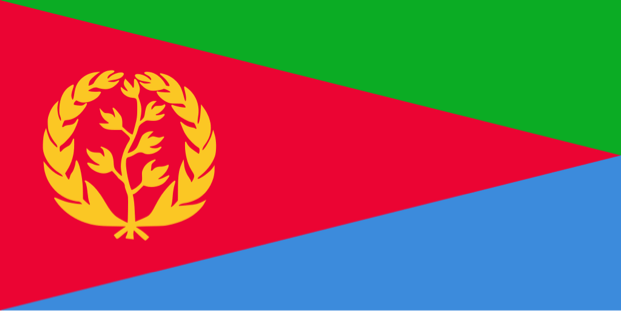The security situation in Eritrea has remained unstable since the war with Ethiopia ended in 2000, leaving large quantities of ammunition in the country.1 Ongoing armed conflicts in Tigray (south of Eritrea's border with Ethiopia) and Sudan also fuel instability at its borders.2 As of 2023, reports state that human rights violations continue to occur in Eritrea.3 Due to this situation, the country has been a transit point for weapons and ammunition trafficking in the region.4 Eritrea is also one of the world’s most heavily mined countries and unexploded ordnance continues to pose significant risks.5
The African Union; the Economic Community of West African States (ECOWAS); the Regional Centre on Small Arms in the Great Lakes Region, the Horn of Africa and Bordering States (RECSA); the Sub-Regional Arms Control Mechanism (SARCOM); and the Bonn International Centre for Conflict Studies (BICC) are working on the ground to support the through-life management of ammunition, in collaboration with the Eritrean Ministry of Defence. Efforts have included establishing a database to increase awareness of ongoing and completed interventions in the field of small arms and light weapons control, organising physical security and stockpile management training, and providing capacity development and advice on small arms and light weapons control.6
1 Bertelsmann Stiftung, BTI 2022 Country Report: Eritrea (Gütersloh: Bertelsmann Stiftung, 2022), https://bti-project.org/fileadmin/api/content/en/downloads/reports/country_report_2018_KWT.pdf; "Past Conflict: Military occupation of Eritrea by Ethiopia," Rule of Law in Armed Conflicts Project (RULAC), Geneva Academy of International Law and Human Rights, updated October 5, 2022, https://www.rulac.org/browse/conflicts/military-occupation-of-ethiopia-by-eritrea.
2 “Ethiopia Conflict: Thousands of Eritrean Refugees Flee New Deadly Attack on Camp," UN News, February 18, 2022, https://news.un.org/en/story/2022/02/1112232; “Sudan's Military Strikes Disputed Region Bordering Ethiopia,” Al Jazeera, June 29, 2022, https://www.aljazeera.com/news/2022/6/29/sudans-military-strikes-disputed-region-bordering-ethiopia.
3 “World Report 2023: Eritrea Events of 2022,” Human Rights Watch, accessed September 11, 2023, https://www.hrw.org/world-report/2023/country-chapters/eritrea.
4 “Eritrea,” The ENACT Organized Crime Index, accessed September 11, 2023, https://africa.ocindex.net/country/eritrea.
5 “Eritrea,” Landmine & Cluster Munition Monitor, accessed July 26, 2022, http://www.the-monitor.org/en-gb/reports/2020/eritrea/impact.aspx.
6 “Ammunition Management Activity Platform (A-MAP),” GICHD, 2022, https://a-map.gichd.org.
Launch the country dashboard
Further information
Accidental explosions
Since the Small Arms Survey began collecting data in 1979, no accidental explosions have been reported in Eritrea.
Source: “Unplanned Explosions at Munitions Sites (UEMS) Database,” Small Arms Survey, updated December 15, 2021, https://smallarmssurvey.org/database/unplanned-explosions-munitions-sites-uems.
Cases of diversion
Insufficient information on cases of diversion in Eritrea.
Disposal
Insufficient information on the disposal of ammunition in Eritrea.
Needs
No needs have been reported for Eritrea.
Source: Eritrea, National Report on the Implementation of the Programme of Action on Small Arms and Light Weapons (PoA) and the International Tracing Instrument (ITI) (New York: Permanent Mission of Eritrea the UN, 2014), https://unoda-poa.s3.amazonaws.com/poa-reports-le/2014%4062%402014-PoA-Eritriea-E.pdf.



